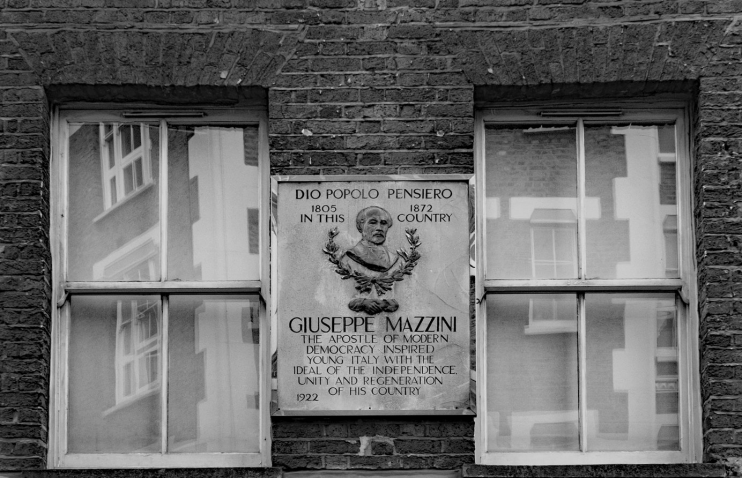Little Italy
Little Italy, Camden/Islington
A nickname applied to the south-western corner of Clerkenwell because of its strong Italian connections, which go back at least two centuries

Also once known as Italian Hill or the Italian Quarter, Little Italy’s boundaries have historically been recognised as Clerkenwell Road, Farringdon Road and Rosebery Avenue.
Over the course of the 19th century the Saffron Hill area – as it was earlier known – gained a growing population of working-class Italians. The authorities were glad to see these industrious immigrants progressively supplanting the pickpockets and fences who had made the area notorious and were vividly portrayed by Dickens in Oliver Twist (1837–8).
St Peter’s church was conceived in 1845 by St Vincent Pallotti, a Roman Catholic priest and founder of the Pallottines, the Society of the Catholic Apostolate. The Irish architect Sir John Miller-Bryson modelled the church on the Basilica of San Crisogono in Rome’s Trastevere district. It was consecrated as the church of St Peter of all Nations in 1863 and is now a grade II* listed building.
The Italian consul published a report in 1895 estimating that his countrymen in London numbered around 12,000, with southern Italians traditionally making their home in Little Italy while those from farther north were establishing a newer base in Soho.
The Soho contingent consisted of tailors, watchmakers, artists, domestic servants and those working in what would nowadays be called the hospitality industry. In Little Italy the principal occupations were all of an itinerant variety: “organ men, ice vendors, ambulant merchants, plaster bust sellers, models for artists, etc.”
The plaster bust trade features in the Sherlock Holmes adventure ‘The Six Napoleons’, in which the villain is of Italian origin and Inspector Lestrade calls upon the help of a colleague who has made a speciality of “Saffron Hill and the Italian Quarter”. While some observers looked down on the Neapolitans and Calabrians of Little Italy – and Conan Doyle certainly depicted a few of them in a poor light – most acknowledged that they were generally striving to make an honest living.
The concentration of Italians in this area reached a peak around the time of the consul’s report and during the 20th century the community spread itself more thinly throughout the capital.
Still, at the time of the 2011 census, almost 5 per cent of Little Italy’s residents were actually born in Italy, compared with just 0.75 per cent in London as a whole. (The census didn’t attempt to count how many British-born residents are of Italian descent.)

Sunday worship at St Peter’s has continued to provide a focal gathering point for Italians in London, especially at Christmas, Epiphany and Easter.
The procession of Our Lady of Mount Carmel – held on the Sunday after 16 July – is Little Italy’s most important event. Except during wartime it has taken place annually since at least 1896. According to the church’s historian, “it appears to have been the first outdoor Roman Catholic manifestation of faith [in England] since the time of Henry VIII’s Reformation” – and Queen Victoria is said to have granted special permission to the local police chief in Holborn for the parade to take place.
Decorated floats began to feature during the 1950s and thousands of people line the streets around St Peter’s to watch the procession every year. Nowadays there are stalls selling Italian delicacies too.
To the west of the church there’s a handful of Italian eateries, including Casa Italiana San Vincenzo Pallotti and Terroni of Clerkenwell. Farther west, next to an Italian pizzeria, the Holborn School of Motoring (Scuola Guida) offers driving lessons in Italian. Or you can buy a Vespa at Scootech, 73 Clerkenwell Road.
Giuseppe Mazzini, the writer, patriot and revolutionary, lived in Laystall Street and founded an Italian language school in nearby Hatton Garden in 1841.
